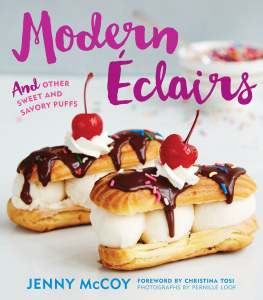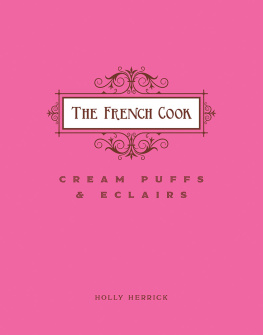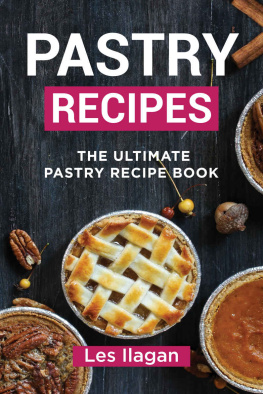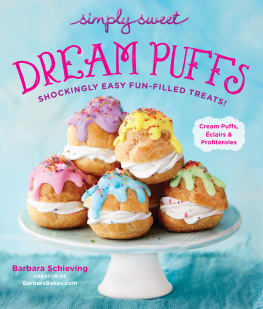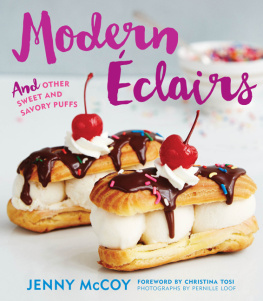Contents



Copyright 2016 by Jenny McCoy
Interior photography 2016 by Pernille Loof
All rights reserved.
Prop styling by Brian Heiser
Food styling by Junita Bognanni
Recipe testing by Joanne Allegra and Carly DeFilippo
For information about permission to reproduce selections from this book, write to or to Permissions, Houghton Mifflin Harcourt Publishing Company, 3 Park Avenue, 19th Floor, New York, New York 10016.
www.hmhco.com
Library of Congress Cataloging-in-Publication Data
McCoy, Jenny.
Modern clairs : and other sweet and savory puffs / Jenny McCoy ;
Photography by Pernille Loof.
pages cm
Includes index.
ISBN 978-0-544-55719-2 (paper over board); 978-0-544-55826-7 (ebook)
1. Pastry. 2. Desserts I. Title
TX773.M165 2016
641.86'5dc23
2015019994
Design by Rachel Newborn
v1.0316
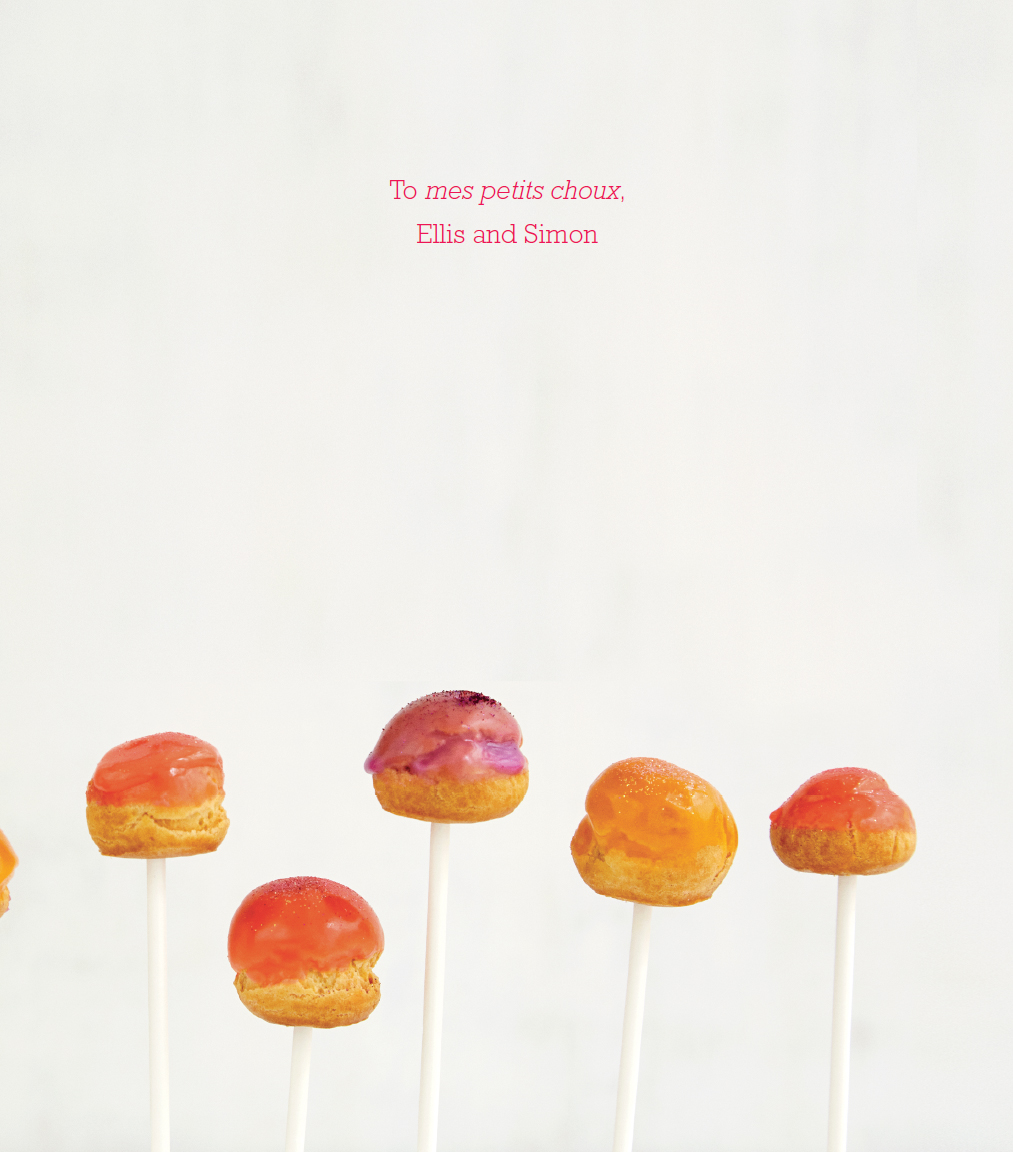

Contents
Foreword
In the wild world of dessert, there is always a pastry that intrigues and inspires. Where possibilities are endless and imagination runs rampant. clairs are just that. The flavors! The fillings! The size! The shape! The textures! Theyre modern, hip, and forever exciting. Its no surprise that Jennys obsession with them has led to this sweet and savory pastry adventure ahead.
I dont believe Ive ever met anyone who knows how to balance the fun and sweet side of life with the skill of a trained pastry chef quite like Jenny. She has an amazing drive and passion that is like no other, and it comes through in everything she does, especially her food. Jenny worked her way up through the highest acclaimed restaurants, so its no wonder shes a star. She is clever and creative, but honors simplicity through the classics like the pro that she is. Anything and everything that she dreams up is as suchremarkably simple, yet refined and utterly delicious.
Christina Tosi
Chef and founder, Momofuku Milk Bar
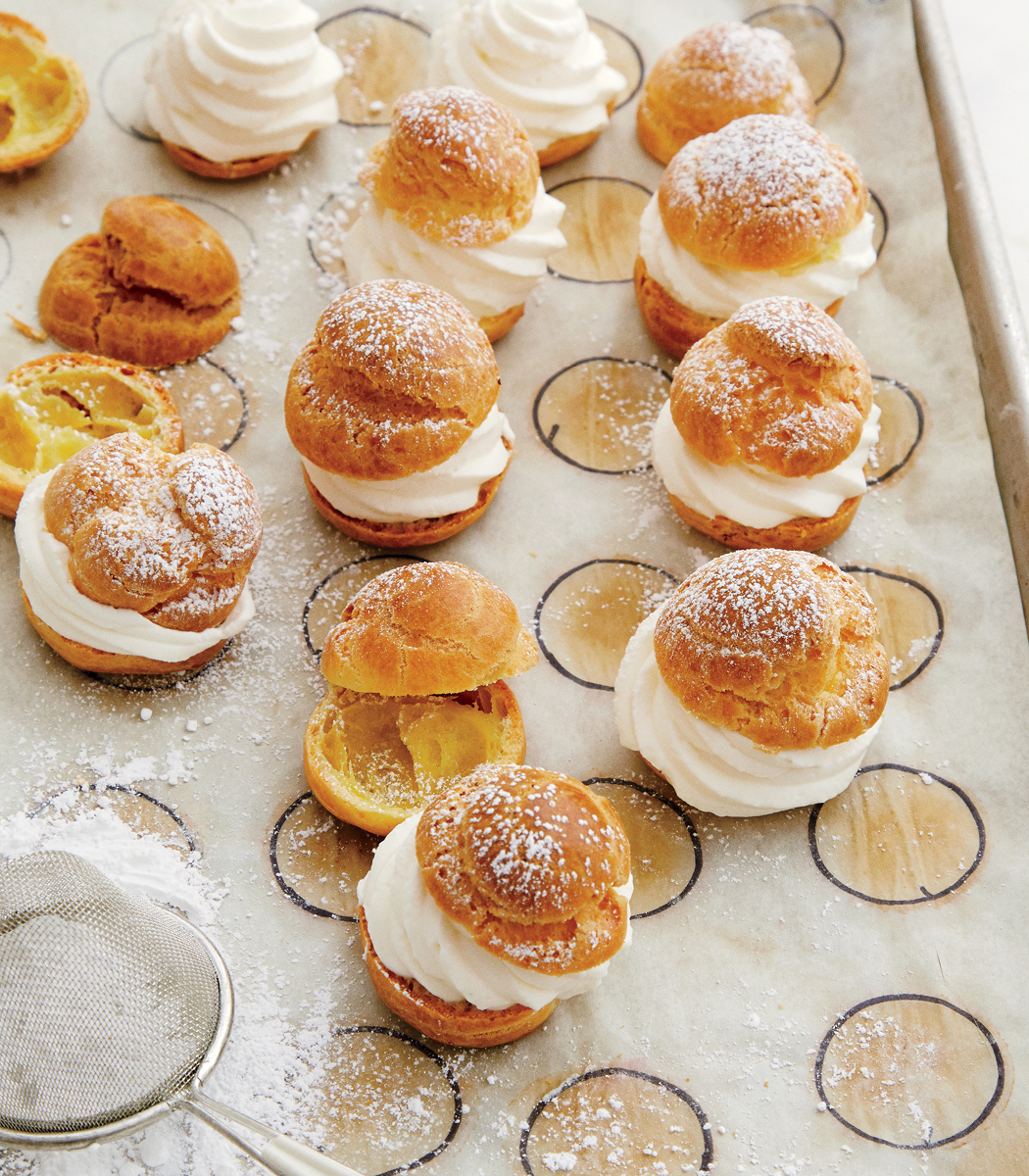
Introduction
OH, PTE CHOUX, ITS FINALLY YOUR TURN FOR THE LIMELIGHT
Move over, macarons and meringue... its time for another classic French sweet to get a makeover. And this time, we are not only going sweet, but we are going savory, too.
Did you know that pte choux literally translates to paste of cabbage? Doesnt that sound delicious? Are you beginning to wonder if this book is about cabbage cookery? Of course not! This cookbook is the exploration of pte choux, a glorious dough that, when baked, puffs into a shape that sort of resembles a head of cabbage. (Hence the reason for the name, which, by the way, really means a pastry that puffsas in cream puffs, clairs, profiteroles, and so forth.)
To make pte choux, all you need are seven staple baking ingredients: water, milk, butter, salt, sugar, bread flour, and eggs. With just a few basic toolsa saucepan and a rubber spatulayou can whip up a batch of the dough. Armed with a pastry bag and a few piping tips, you can create a variety of shapes. Pop them in the oven, and voil! You have puffed delights that can be filled and adorned with any flavor combination you can think up.
Pte choux is truly amazing. In my humble opinion, it is unparalleled in both ease of preparation and versatility. How many types of pastry dough can be used for both sweet and savory recipes? How many types of pastry dough can be piped into any shape imaginable? Not many. So get ready to have some fun without much fuss!
WHATS SO MODERN ABOUT PTE CHOUX, ANYWAY?
Throughout my career as a professional pastry chef, my specialty has been taking the tried and true, the traditional, the terribly typical, and making them better. Tweaking a base recipe to my perfection, then exploring how to use that recipe in a variety of ways, is my forte. This book is my love letter to pte choux. Its recipes will inspire you to make all sorts of new and delicious sweets and savories and give you the tools to create new flavor combinations of your own.
Most recipes for pte choux are fairly similar, with a minor twist here and theresome call for a combination of milk and water, some use just water, and some use instant dry milk. Some require all-purpose flour and some require bread flour. Some are baked at a very high temperature, and some at a low temperature. Its not my pte choux recipe that is especially modern. What is modern is how Ive used it throughout the book to create imaginative baked goods that you will not find in your local bakery case.
WHAT THE PUFF IS IN THIS COOKBOOK?
In the beginning, I will teach you the technique for making pte choux. Although Ive made the recipe very simple, be sure to read it through entirely before you get started. Mastering this one easy recipe will ensure your success when making recipes throughout the rest of the book.
It would have been unthinkable to write a book on pte choux without a generous nod to the traditional pastries its known for. So in the next chapter, you will learn how to make the most celebrated recipes for pte choux, such as Cream Puffs filled with whipped cream (), the exquisite French dessert often served at weddings.
As for the next four chaptersFruity, Chocolate, Frozen, and Holidayyou will find recipes for modern interpretations such as Fruity Pte Choux Pops ().
In the final chapterSavorywe will go way beyond the typical sweet application of pte choux. I will teach you new and exciting ways to use pte choux for scrumptious salty recipes. Yes, weve all heard of gougres (a.k.a. cheese puffs), but have you ever made a lobster roll in an clair shell, or a BLT in a cream puff shell? I didnt think so. I hope now you will.
THE BRIEFEST HISTORY OF PTE CHOUX (AS I KNOW IT)
According to legend (and some seriously dusty cookbooks), pte choux was invented by Catherine de Medicis famous chef, Pantanelli (spelled various ways, depending on the source), in 1540 or so. There are two possibilities:
1) Pantanelli invented a pastry that could be made quickly while traveling at the request of his employer. (Remember: Catherine was forced to leave Florence... and thankfully, she had the good sense to bring along her chef while on the run.)
2) Pantanelli was a culinary genius who, upon Catherines marriage to the Duke of Orlans (who later became the King of France, Henry II), decided to make a gteau with a newly invented dough, pte Pantanelli, for the king.
The dough changed names as it changed hands over the centuries, and was used in many applications, mostly those similar to popovers. But it didnt reach its full potential until finally being perfected and published in 1815 by the great French chef Marie-Antoine Carme, in his famous cookbook Le Ptissier royal parisien. Carmes version of the dough recipe is what is now most commonly used when making profiteroles, cream puffs, and clairs.

